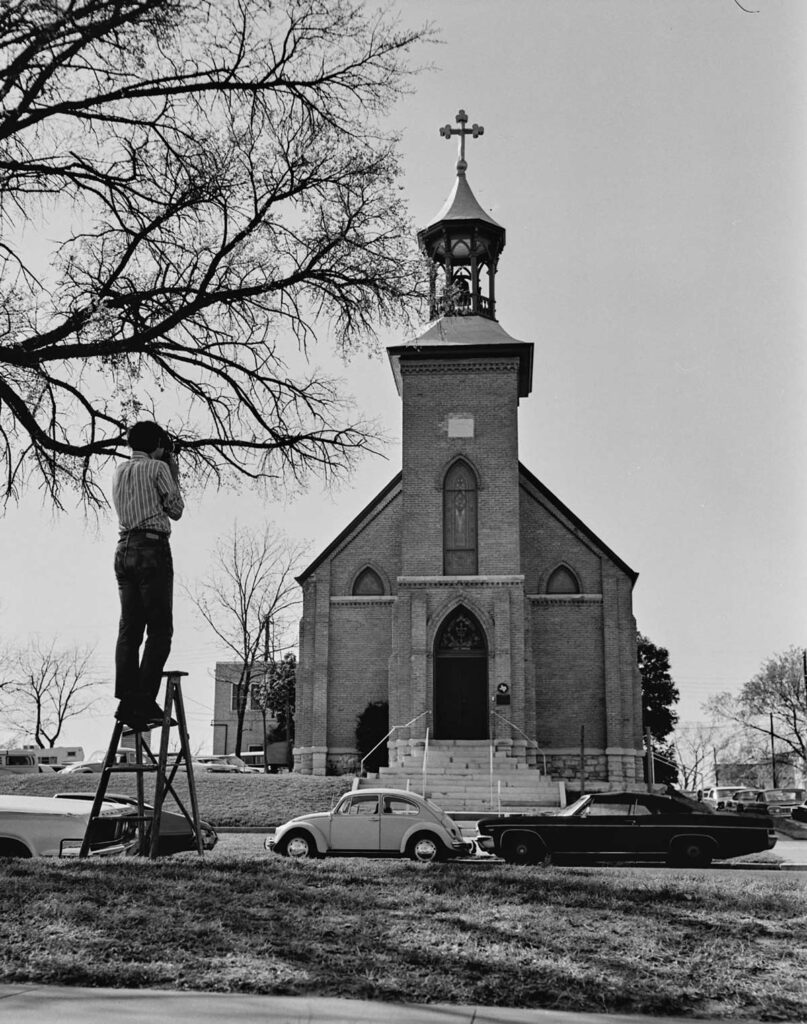The Texas Historical Commission Library is currently housed in a nationally recognized landmark that was once a Lutheran church with a unique, significant history. Although more than 140 years old, the church’s beginnings are an example of sustainability before such a movement existed, and its survival constitutes an early example of historic preservation efforts in Austin. The simple rectangular building has a prominent Carpenter’s Gothic-style cupola capping a striking vertical steeple at its main entry, which faces Congress Avenue.
In 1882, church members felt compelled to create a new building, but funds were limited. They decided to reuse salvaged materials from the adjacent Texas State Capitol, which had recently burned down. Buff brick and limestone were collected from just a block away and used to build significant portions of the new church. The frugal implementation of reclaimed materials allowed the church to meet a tight budget and retain a grand presence at the same time. The concept of reuse was employed again when two massive Gothic-style doors–removed from the Old Main building at the University of Texas—were installed as the main entry doors. Years later, after the church outgrew the building, the congregation moved to a new location and the empty structure was slated for demolition. Local preservation advocates successfully lobbied for historic designation, extending the structure’s life and purpose.
After the Lutheran Church vacated the property, it was sold to the state. The state originally planned to demolish the structure and use the land to extend the Texas Capitol Grounds, but when preservation efforts took hold, the state decided to deed the property to the Texas Historical Commission (THC) instead. It was a perfect fit—symbolically appropriate for the group dedicated to saving, restoring, and repurposing significant historical state landmarks. The building now serves as THC’s library and research center. If one visits the publicly accessible center, they can peruse over 17,000 state historical marker files; over 3,400 records for the state’s National Register sites; and a wealth of other items such as photographs, maps, and written county and city histories from across the state.
The classic, stately exterior consists of five beautiful lancets, pointed-arch stained-glass windows separated by embedded brick buttresses along the long east-west axis. At the entry façade, the cupola (steeple) is capped with a belfry with a cross-shaped finial at the top. Limestone was used for the foundation, and pressed gray tin for the roof. The overall composition is a refined example of a Swedish-inspired Gothic Revival building. – Darwin Harrison, AIA



